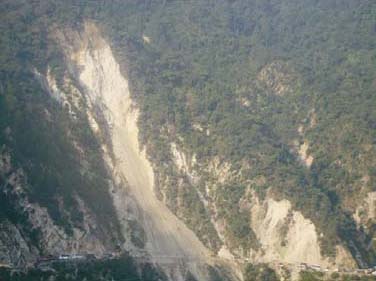 However, increasing anthropogenic intervention in the recent times appears to be contributing to terrain instability in addition to natural factors, as observed by increasing frequency and magnitude of landslides since 1970.
However, increasing anthropogenic intervention in the recent times appears to be contributing to terrain instability in addition to natural factors, as observed by increasing frequency and magnitude of landslides since 1970.
During August and September 2010, Uttarakhand Himalaya witnessed large-scale slope destabilization, particularly along the roads where widening work was in progress leading to huge damage. The cause of regional-scale landslides has been attributed to exceptionally high rainfall in the region during September. When the average rainfall for the month of August and September from 2000 to 2009 is compared with rainfall data of the same period of 2010, it was found that in September 2010, 336 per cent higher rainfall was received by the area. However, the question that arises is: was it unusual rainfall-induced calamity or a result of human intervention?
The paper suggests that inadequate consideration of geology and geomorphology during the road alignment and poor, faulty engineering techniques were major factors responsible for the recent landslides. Experts hold the view that while tampering with the Himalayan slopes, one needs to be extra careful as the slopes, which have evolved by exogenic and endogenic processes are precariously balanced.
Under normal climatic conditions, a majority of the valley slopes are in the state of geomorphic equilibrium. Rain normally triggers the landslide by raising the water table and water pressure, which ultimately leads to slope failure. This phenomenon is a part of the natural process of hill slope erosion.
The paper stresses the need for developing a module which should have the provision for ascertaining the terrain stability/instability using the standard geological and ecological criteria. Further, similar to earthquake zonation, valley slopes should be categorized based on the degree of stability. With the advent of satellite remote sensing technology, it is now possible to gather information both in spatial and temporal domain. Such data provide an opportunity to ascertain the nature and magnitude of change witnessed by a particular valley slope, so that an appropriate slope treatment strategy can be evolved.
The paper concludes with the need for working towards generating a scientific database on spatial and temporal changes in the terrain characteristics and for devising methodologies by the concerned departments in order to minimize the severity of landslides in future.
Download the paper here -